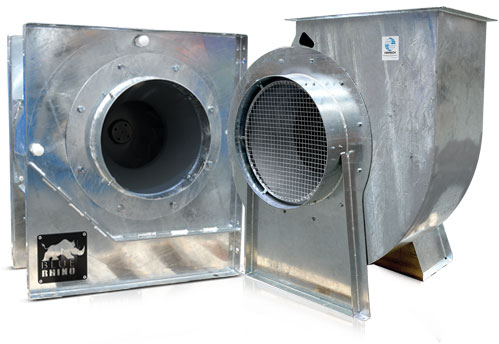
Blue Rhino Box Type (BRB) Blue Rhino Pedestal Type (BRP)
After extensive product development and testing,
Fantech has released the Blue Rhino range of single width, single inlet (SWSI) centrifugal fans.
Engineered and manufactured by Fantech, the new
Blue Rhino SWSI range features a high performance backward-curved laminar impeller and Direct Drive
motor. Its modern construction moves away from
the belt and pulley system and thereby reduces ongoing maintenance costs and eliminates the need for bearings.
The Blue Rhino’s innovative design integrates a
state-of-the-art Variable Speed Drive (VSD) that can be
preconfigured to the client’s requirements. This helps
reduce service costs, provides greater reliability and can save installation and commissioning time. The Direct Drive motor delivers improved energy efficiency and will almost always have more capacity to meet any additional air flow requirements by simply adjusting the VSD.
Standard features of the Blue Rhino range include a
heavy duty fully welded construction, inlet spigot, discharge flange, inspection hatches and drain plugs. They also
come standard hot dip galvanised for a long lasting robust finish, or with a durable blue powder-coating.
The range is available in 15 impeller sizes extending
from 12 inch (305mm) to 44 inch (1120mm) in diameter.
Clockwise impeller rotation is standard, with anti-clockwise rotation also available on request. Smaller sizes feature a
simple and compact box type design (BRB), which can be rotated to 0°, 90°
and 180° position
onsite to suit the
installation requirements. Larger sizes feature a
pedestal-mounted motor design (BRP), which are available in 0°,
90° and 180° discharge angles.
“The progressive design of the Blue Rhino is a result of the hands-on experience and knowledge we have within the business,” said Fantech Group Marketing Manager, Frank Cosentino.
“The innovative design is a real advance on existing products
in the market, and provides our customers with a time saving
‘plug and play’ system that can simplify commissioning
and also reduce maintenance costs.”





